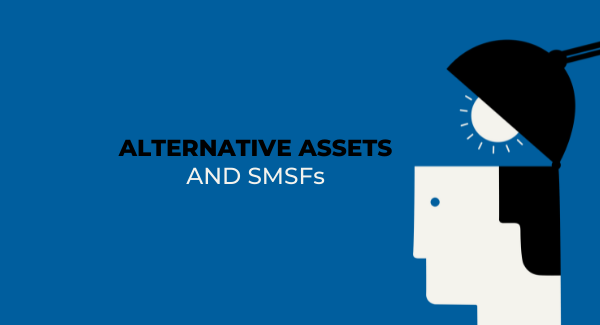SMSF Investment Strategy for Retirement in a Low Yield Environment
With the impacts of COVID-19 being felt across the world, investors are now facing a lower yield environment for a more sustained period of time. Even before the pandemic, Australia had historically low-interest rates, but in the current recession environment, some ASX-listed companies have taken action to suspend, cancel or revise dividends payments too.
With Self Managed Super Funds (SMSF) making up around a quarter of the superannuation industry and a considerable amount of baby boomers nearing retirement age, many people are now facing a lack of stability regarding the amount of income they will have in retirement.
For those close to preservation age, this period may be a time where they look to review their current investment mix and determine if their asset mix is right for them in a sustained low yield environment.
For the short term, it may be even more of a challenge for SMSF investors to generate the level of income they have experienced in the past. In this article, we explore how SMSF investors can consider their investment mix and provide some tips for ensuring your SMSF is there for you to provide a healthy retirement income.
Reconsider if drawing down SMSF capital is necessary
While market bumps are nothing to be too concerned about when you are in the wealth-building stage, a sudden event like we have seen with COVID-19, can prove very challenging for those entering the decumulation phase of funding retirement.
If you’re already drawing an income from your SMSF and have other income streams too, you might want to reconsider your approach. Perhaps drawing down on your capital is not something you want to continue in a low yield environment if you have the ability to receive income from elsewhere.
If your SMSF is not structured optimally, you may find yourself drawing down on your capital when it has been heavily depleted by large market losses. This would expose you to greater risk than you might have planned.
When markets are rising and volatility is low, drawing down on capital to provide income can work. But in times of crisis, you may end up sacrificing more capital than you realise. This can make it difficult to regrow your capital in the future to meet your retirement funding goal.
SMSF investors reduced their exposure to shares
As an SMSF investor, you tend to have a fairly advanced understanding of your investments and usually make smart decisions when it comes to building your wealth.
But even the most seasoned investor has been rattled from the initial fallout of the COVID-19 pandemic. The Age reported that between February and May, Australia's SMSFs cut their holdings in direct shares to the lowest level since the global financial crisis. Which shows that even the most experienced investors were participants in some of the panic selling that occurred during the pandemic's onset.
This is backed up by the 2020 SMSF Investor Report, that showed SMSFs reduced their exposure to shares by 4 per cent over the past year. With the percentage of shares down from a high of 45% to now sit at 31%. Countered by an increase in cash and cash-like holdings from 25% to 27%.
On the flip side though, 56 per cent of investors did not make substantial changes to their mix of investments and assets. With many in the SMSF community not panicking but instead seeing the volatility as an opportunity to buy. But which markets you buy in might now be more of a consideration than before the pandemic.
SMSF investors have a love affair with local investments
Self-managed superannuation fund (SMSF) asset allocation data collated by the Australian Taxation Office (ATO) for SMSFs shows that the average SMSF investor is highly concentrated in domestic investments. With a particular focus on Australian shares, property and cash. Which unwittingly may provide a level of unintended concentration risk.
This should not come as too much of a surprise. As the domestic market does bring along with it a level of attractiveness in terms of franking credits and relatively high dividend yields compared to other markets.
What many might not recognise though is that Australia’s local share market has a high concentration in the financial and commodities industries. So if the big 4 banks, for example, perform poorly due to their risk exposure to the domestic property market, the confidence in our whole local share market can be rocked.
The effect of this can be further felt for SMSF investors, as the average SMSF portfolio often includes domestic property. Should property prices fall further, it’s possible SMSF investors might experience capital losses on all areas of their personal asset portfolio.
A purely domestic focus for your SMSF portfolio sees you with low exposure to the technology sector. The pandemic has been a boon for this sector with people confined to their homes for work and entertainment. Major US tech players such as Amazon, Apple, Microsoft and Google while not immune from the COVID-19 impact have seen their recovery easily outpaced the wider market.
Diversification is key for your SMSF investment strategy
What the above shows us is that diversification remains as important as it has ever been. You want to be looking to not only diversify across your growth assets but also look to diversify the sources of yield at the same time. Whether this is considering overseas markets or looking at alternative investment options that you might not have considered before.
One area that is often overlooked by many Australian investors is the fixed income space. With many investors planning to load up with riskier equities to chase yield. But focusing on yield alone in a low-interest environment could mean investors are missing out on the benefits of a diversified portfolio. With the benefits of consistent and predictable income, liquidity and a level of protection against economic stress.
Take control of your SMSF investment strategy
Taking control of your SMSF investment strategy is as simple as contacting us at Kelly+Partners.
Our advisers focus on building a long-lasting relationship with you and they are committed to creating value and performance.
If you have any questions, please contact your local Kelly+Partners office today. You can also request a call back at a time that suits you.
DISCLAIMER
Kelly Partners Private Wealth (Wholesale) Pty Ltd is a corporate authorised representative of Kelly Partners Private Wealth Pty ltd (AFSL: 516704, ABN 14 629 559 860). Any general advice provided has been prepared without taking into account your objectives, financial situation or needs. Before acting on the advice, you should consider the appropriateness of the advice with regard to your objectives, financial situation and needs.
Kelly Partners Private Wealth Sydney Pty Ltd is a corporate authorised representative of Madison Financial Group Pty Ltd (AFSL: 246679, ABN: 36 002 459 001)
Share this
You May Also Like
These Related Stories

Can I live in my SMSF property when I retire?

What are financial assets, and what are the benefits of investing in them?

/Brand/Logos/Kelly%20Partners%20Accountants%20Logo/Kelly-Partners-Accountants-Horizontal-Logo.webp?width=1500&height=212&name=Kelly-Partners-Accountants-Horizontal-Logo.webp)






